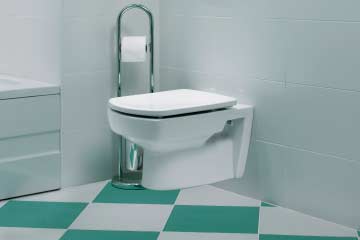In today’s fast-paced world, convenience is king. This is especially true in the kitchen, where we are constantly looking for ways to make cooking and cleaning easier.
Self-cleaning ovens are a great example of this convenience.
With the simple push of a button, these ovens can eliminate tough stains, burnt-on food, and grease without the need for messy scrubbing.
But how do self-cleaning ovens work? And are they really worth the investment? Learn that and more here.
Table of contents
- Are self cleaning ovens a good idea?
- How does Self Cleaning Oven work?
- Benefits of Self-Cleaning Ovens
- What are the Considerations for Using Self-Cleaning Ovens?
- How Often to Use the Self-Clean Oven Cycle
- Can you leave the house while the oven?
- Can you cook after self-cleaning your oven?
- Tips for Getting the Best Results From an Oven
- 3 Dangers Of Using Your Oven’s Self-Cleaning Function
- Best Tips to Maintain Self-cleaning Ovens
- Best practices for self cleaning oven
- How long does a self cleaning oven service take?
- Can I stop an oven when it is cleaning?
- Conclusion
- References
- Recommendation
Are self cleaning ovens a good idea?
Self-cleaning ovens utilize a high-temperature pyrolytic process to eliminate food residues, grease, and grime without the need for manual scrubbing.
How does Self Cleaning Oven work?
Here’s a detailed explanation of how self-cleaning ovens work:
1. Initiating the Self-Cleaning Cycle:
To activate the self-cleaning cycle, you’ll typically find a designated button or control panel option on your oven.
Once selected, the oven door locks automatically, and the interior temperature rises to an exceptionally high level, reaching around 900°F or 500°C.
2. High-Temperature Pyrolysis:
At this extreme temperature, the accumulated food residues, grease, and grime undergo a process called pyrolysis.
Pyrolysis is the thermal decomposition of organic matter, breaking down the organic compounds into carbon dioxide, water vapor, and other harmless substances.
3. Ash Removal:
After the self-cleaning cycle, which typically lasts around three to five hours, the oven cools down, and the door unlocks.
You’ll notice a layer of ash or residue on the oven floor.
This ash can be easily wiped away with a damp cloth.
Benefits of Self-Cleaning Ovens
It offer several advantages:
Effortless Cleaning: Eliminates the need for manual scrubbing and scouring, saving time and effort.
Thorough Cleaning: The high temperature effectively removes stubborn stains and burnt-on food residues.
Sanitizing Effect: The intense heat helps sanitize the oven interior, reducing the risk of bacteria and germs.
What are the Considerations for Using Self-Cleaning Ovens?
High Temperature: The extreme heat can damage certain oven components, such as the door seal or gaskets, if not properly maintained.
Odor and Smoke: During the self-cleaning cycle, there may be some odor and smoke emissions due to the burning of organic matter.
Energy Consumption: The self-cleaning process consumes a significant amount of electricity due to the high temperatures involved.
How Often to Use the Self-Clean Oven Cycle
While self-cleaning ovens offer a convenient solution for deep cleaning your oven, it’s important to use this feature judiciously.
Overusing the self-cleaning cycle can put unnecessary strain on your oven components and shorten its lifespan.
Experts recommend using the self-clean function every 3-6 months, depending on the level of usage and the amount of food residue and grease that accumulates.
Can you leave the house while the oven?
It’s generally safe to leave the house while the oven is undergoing the cleaning cycle.
The oven door locks automatically, and the high temperatures are contained within the oven cavity.
However, it’s always a good practice to ensure proper ventilation by opening windows or using an exhaust fan before activating the cycle.
Can you cook after self-cleaning your oven?
Once the self-cleaning cycle is complete and the oven has cooled down, it’s safe to resume normal cooking operations.
The ash residue from the cleaning process is harmless and can be easily wiped away with a damp cloth.
Tips for Getting the Best Results From an Oven
To ensure your self-clean oven cycle effectively removes dirt and grime, follow these tips:
Remove Racks and Bakeware: Before activating the self-clean cycle, take out all removable racks and bakeware. These items can be cleaned separately with soap and water or in the dishwasher.
Clean Around the Oven Door: Wipe down the oven door gasket and the area around the door to prevent food particles or debris from getting trapped during the high-temperature cleaning process.
Ensure Proper Ventilation: Open windows or turn on an exhaust fan to provide adequate ventilation while the oven is undergoing the self-clean cycle.
Complete the Cleaning Process: Once the cycle is finished, allow the oven to cool completely before opening the door. Wipe away any remaining ash or residue with a damp cloth.
3 Dangers Of Using Your Oven’s Self-Cleaning Function
While self-cleaning ovens offer a convenient cleaning solution, it’s essential to be aware of potential safety hazards:
Carbon Monoxide Emissions: During the self-cleaning cycle, the high temperatures can cause food residues and grease to break down, potentially releasing carbon monoxide (CO), a colorless, odorless, and poisonous gas. Ensure proper ventilation to minimize CO exposure.
Damage to Oven Components: The extreme heat generated during the self-clean cycle can put stress on oven components, such as the door seal, gaskets, or electrical wiring. Overusing the self-clean function can accelerate wear and tear, potentially leading to malfunctions or safety hazards.
Fire Risk: In rare instances, the high temperatures involved in the self-clean cycle can ignite residual grease or food particles, posing a fire risk. It’s crucial to remove as much food residue as possible before activating the self-clean cycle.
Best Tips to Maintain Self-cleaning Ovens
Maintaining self-cleaning ovens requires a combination of regular cleaning, proper usage, and preventive measures to ensure optimal performance and longevity.
Here are some effective tips to keep your self-cleaning oven in top condition:
Regular Cleaning:
Wipe up spills and food residue promptly to prevent them from hardening and becoming more difficult to remove during the self-cleaning cycle.
Clean the oven door gasket regularly to prevent food particles from getting trapped and causing smoke or odor during the self-cleaning cycle.
Clean the oven racks and bakeware periodically using soap and water or in the dishwasher.
Proper Usage of Self-Cleaning Cycle:
Remove all removable oven racks, bakeware, and cookware before initiating the self-cleaning cycle.
Ensure adequate ventilation by opening windows or using an exhaust fan to minimize odor and smoke emissions during the cycle.
Do not overload the oven with food residue before activating the self-cleaning cycle, as this can lead to incomplete cleaning or potential fire hazards.
Preventive Measures:
Avoid using abrasive cleaners or scouring pads on the oven interior, as these can damage the surface and make it more susceptible to dirt and grime buildup.
Do not place aluminum foil or other non-oven-safe materials inside the oven, as these can melt or release harmful fumes during the self-cleaning cycle.
Regularly inspect the oven door seal for signs of wear or damage and replace it promptly if necessary to maintain proper sealing and prevent smoke or odor leaks during the self-cleaning cycle.
Best practices for self cleaning oven
Here are some best practices for using a self-cleaning oven:
Remove all removable parts from the oven. This includes oven racks, bakeware, and any cookware. These items can be cleaned separately with soap and water or in the dishwasher.
Wipe up any spills or food residue. This will help to prevent the spills from hardening and becoming more difficult to remove during the self-cleaning cycle.
Ensure proper ventilation. Open windows or turn on an exhaust fan to minimize odor and smoke emissions during the cycle.
Do not overload the oven with food residue. This can lead to incomplete cleaning or potential fire hazards.
Follow the manufacturer’s instructions carefully. Each oven model may have slightly different instructions for the self-cleaning cycle.
Let the oven cool completely before opening the door. This will help to prevent burns.
Wipe away any remaining ash or residue with a damp cloth.
How long does a self cleaning oven service take?
Self-cleaning oven cycle typically takes 2-5 hours to complete.
Can I stop an oven when it is cleaning?
Yes, you can stop a self-cleaning oven cycle. However, it is important to note that the oven will still be hot, so you should use caution when opening the door. To stop the cycle, simply press the “cancel” button.
Conclusion
Self-cleaning ovens are a convenient and time-saving way to keep your oven clean.
However, they are not without their drawbacks. They can be expensive, use a lot of energy, and emit unpleasant odors during the cleaning cycle.
Additionally, they may not be effective at removing all types of stains and grease.





